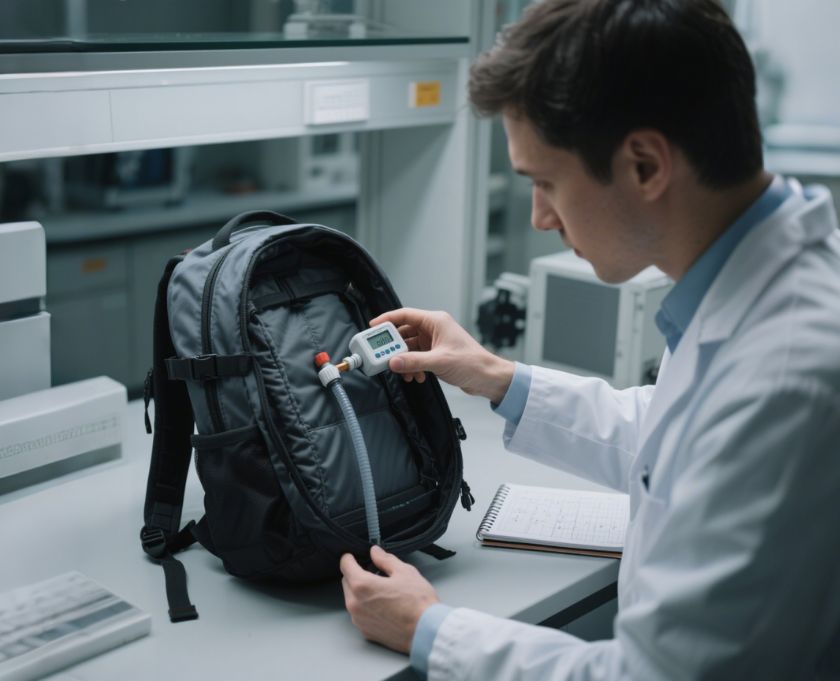Beautiful Plants For Your Interior

Vacuum compression backpacks are a game changer for travelers, hikers, and commuters who want to pack more while carrying less. But like any piece of gear, they’re not immune to issues. Whether it’s a slow leak, poor compression, or a malfunctioning pump, small problems can turn into major frustrations if not addressed promptly.
In this article, we’ll walk you through the most common vacuum compression backpack problems, their root causes, and how to fix them effectively — step by step.
1. The Backpack Doesn’t Stay Compressed After Sealing
Problem: You compress your bag, seal it tight, and minutes later it puffs back up.
Possible Causes:
- Weak or damaged air valves
- Improper sealing technique
- Micro punctures or hidden leaks
Fixes:
- Check the valve for debris — Dust or lint can prevent full closure. Clean with a damp cloth.
- Press firmly along the zipper to ensure it’s fully locked. Some models require double-checking the sealing strip.
- Test for leaks using the “soapy water method.” Spray a soapy solution over the bag and look for bubbles.
- If you find a puncture, patch it using TPU repair tape or contact the manufacturer for repair options.
Pro tip: Always double-check the valve and zipper after compressing. A 10-second check can save hours of frustration.
2. Built-In Pump Doesn’t Work or Feels Weak
Problem: The built-in pump (manual or electric) doesn’t suck air effectively.
Possible Causes:
- Clogged intake
- Pump battery issues (if electric)
- Worn-out internal seals
Fixes:
- For electric pumps, check if the battery is fully charged or needs replacing.
- Open the intake area and remove any obstructions, like fabric bits or dust.
- Lubricate the manual pump seals using a silicone-based lubricant to restore suction power.
- If the pump is detachable, try using a different external vacuum source (e.g., travel vacuum or hand pump) to test if the issue is internal.
Maintenance tip: Always store your backpack in a cool, dry place to avoid pump degradation over time.
3. Compression Time Is Too Long
Problem: You’re spending several minutes getting the backpack to compress — and it still doesn’t seem right.
Possible Causes:
- Overstuffed compartments
- Clothing or objects blocking airflow
- Pump inefficiency
Fixes:
- Don’t overpack — leave at least 10–15% space for air movement.
- Distribute soft items evenly to prevent air pockets.
- Try compressing in short, firm pulses rather than continuous pressure.
- Consider upgrading to a model with a more efficient pump (USB-powered pumps work faster than manual ones).
Time-saving tip: Pre-roll clothes before packing. This reduces air volume and speeds up compression.
4. Bad Odor After Compression
Problem: Your clothes smell musty after opening the compressed bag.
Possible Causes:
- Trapped moisture
- Dirty internal lining
- Lack of air circulation
Fixes:
- Ensure all items are 100% dry before packing.
- Wipe the inner lining with vinegar water or antibacterial wipes after each trip.
- Insert moisture-absorbing sachets or activated charcoal bags inside the compartments.
- For recurring issues, air out the bag in sunlight to kill odor-causing bacteria.
Hygiene tip: Clean your vacuum backpack every 3–5 uses, especially after humid trips.
5. Zipper Seals Don’t Close Properly
Problem: The airtight zippers seem loose or won’t lock in place.
Possible Causes:
- Worn-out sealing strips
- Dirt along the zipper teeth
- Misaligned zip paths
Fixes:
- Clean the zipper teeth with a toothbrush and gentle detergent.
- Rub a small amount of paraffin wax or zipper lubricant along the tracks to restore smoothness.
- Check for misalignment and re-zip slowly from both ends for proper closure.
- If the seal is permanently damaged, contact the brand for replacement parts.
Durability tip: Avoid pulling the zipper under tension; compress the contents first, then zip.
6. Backpack Feels Uncomfortable After Compression
Problem: After compressing, the backpack feels oddly shaped and causes strain when worn.
Possible Causes:
- Lumpy compression
- Misbalanced packing
- Insufficient padding in design
Fixes:
- Use packing cubes or dividers to create even weight distribution.
- Pack heavier items near your back panel to stabilize center of gravity.
- Adjust straps and hip belts after compression to realign the weight balance.
Comfort tip: Try the backpack on before compression and after to adjust accordingly.
7. Air Leaks from the Valve During Travel
Problem: You compress your bag, everything’s fine at home — but mid-trip, it inflates again.
Possible Causes:
- Valve design flaws
- Temperature or altitude pressure changes
- Incomplete closure
Fixes:
- Always double-lock the valve before leaving.
- On planes or high-altitude trips, consider using manual reinforcement: add a clip or tape over the valve.
- Carry a mini emergency repair kit including valve stickers and sealant.
Travel hack: Re-compress the backpack at your destination to adapt to pressure differences.
Conclusion: Smart Use Equals Long Life
Troubleshooting your vacuum compression backpack doesn’t need to be complicated. With proper usage, occasional maintenance, and the right know-how, you can extend the life of your backpack and travel with confidence.
Remember: Most issues stem from simple mistakes — overpacking, ignoring moisture, or failing to check seals. A few extra minutes of care make a big difference in performance and durability.